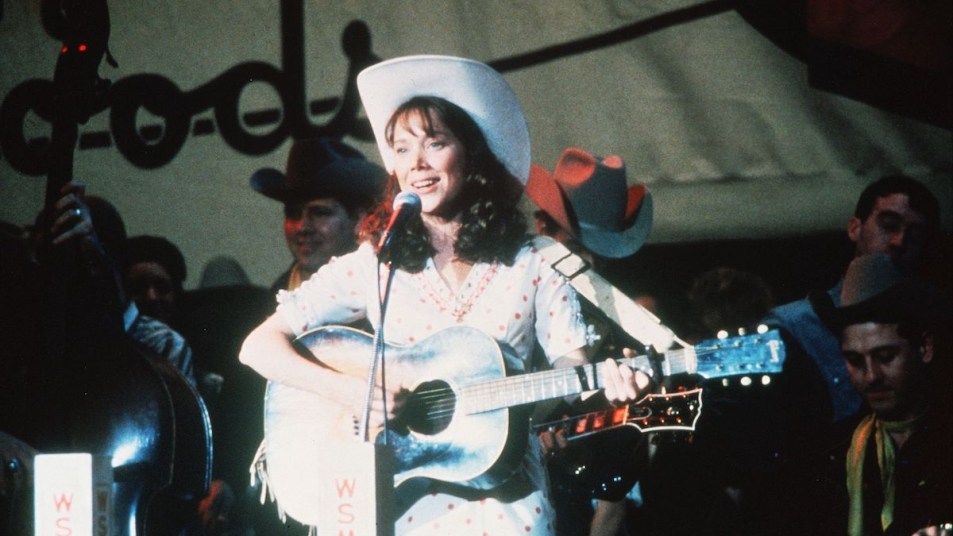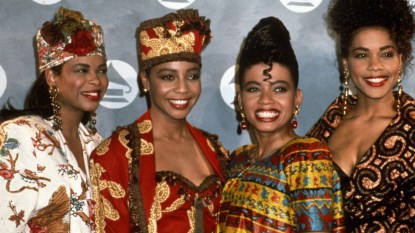A ‘Coal Miner’s Daughter’ Showed Us Just How Spectacular Loretta Lynn Really Was: A Tribute
This 1980 biopic helped immortalize the country icon.

Loretta Lynn, who died this week at her home in Hurricane Mills, Tennessee, lived a momentous life. From rural poverty to country music superstardom, her story is both inspiring and heartbreaking: married at 15 years-old, mother to four kids by 22, physically abused by her husband, enduring the scrutiny that accompanied her international fame. One can only imagine the tenacity and fortitude Lynn summoned over the course of her 90 years. Coal Miner’s Daughter, both the song and the memoir — which was later made into a film starring Sissy Spacek as Lynn — offers a glimpse of that fortitude, and gives fans new and old insight to the power of little Loretta Lynn.
Capturing the Life of the Queen of Country
Lynn’s 1970 country hit “Coal Miner’s Daughter,” chronicles the harsh conditions of her upbringing. Lynn describes her home and hometown (“In a cabin on a hill in Butcher Hollow” — a small coal-mining community in Kentucky), and the backbreaking labor her mother and father endured to support their eight children. Her father was, in fact, a coal minor — he died at 52 from black lung disease, a fatal byproduct of his treacherous work that has claimed more than 76,000 lives since 1968 — and her mother washed clothes on a washboard until her fingers bled. While the picture Lynn painted was bleak, her narration was noble, plainspoken, and centered on American ideals. “We were poor, but we had love,” and “I’m proud to be a coal miner’s daughter,” are an anthem, a triumph, and a celebration of life’s true gifts all in one. Anyone struggling to pay bills or put food on the table could relate, which is as true today as when the song was released in 1971.
The movie Coal Miner’s Daughter was shot in Kentucky, Virginia, and Tennessee, and directed by Michael Apted, a British documentarian whose outsider status infused the film with a unique point of view. In addition to Spacek, the film starred Tommy Lee Jones as Lynn’s husband; musician Levon Helm as her father; and actress Beverly D’Angelo as Lynn’s country music idol, Patsy Cline.
Pulling oneself “up by your bootstraps” is a common theme in biopics, but Coal Miner’s Daughter avoided clichés by allowing Lynn’s life to unfold naturally on screen and inviting the viewer to walk alongside her through it. We see Spacek-as-Lynn evolve from a shy teenager to an assertive woman trying to balance her newfound fame with her proud-but-humble roots. We see her difficult childhood; her teenage marriage; her $17 Sears & Roebuck guitar (a gift from her husband); her first local performance; and her later sellout concerts. Spacek does an exceptional job capturing both Lynn’s youthful innocence and gritty glamour.
Film critic Roger Ebert wrote, “What’s refreshing about Coal Miner’s Daughter is that it takes the basic material (rags to riches, overnight success, the onstage breakdown, and, of course, the big comeback) and relates them in wonderfully human terms.” Moviegoers who saw the film in theaters agreed. Coal Miner’s Daughter was both a box office success and an Academy Awards favorite — it received seven Oscar nominations, including best actress, which Spacek won.
The Connection Between Lynn and Spacek
Lynn handpicked Sissy Spacek to play her based on a photograph she’d seen of the actress. Both women are petite, with striking eyes and high cheekbones, and both are from small southern towns. Spacek already had several memorable memorable performances under her belt, Badlands and Carrie among them, and she had a musical background that made her uniquely equipped for the role. (Spacek originally hoped to become a singer, and she even recorded a single under the name Rainbo in the late ’60s). In Coal Miner’s Daughter, she does her own singing, impressively conveying Lynn’s distinctive southern rasp. In a 1980 TV interview, Spacek said that she worked closely with Lynn to perfect her vocals.
“She’s so honest,” Spacek told The New York Times in a 1980 interview, “and she’s such a woman.” She added that the two are “the same size — five feet two-and-one-half inches,” noting “there is something so familiar about her. When I met her, it was like meeting a long-lost friend.”
The soundtrack album, which included Spacek’s renditions of “I’m a Honky Tonk Girl” and “You Ain’t Woman Enough to Take My Man,” went gold and won a Country Music Association award. Though Lynn had been in the music biz for two decades by the time the film was released, the film and the soundtrack attracted new and returned lapsed fans to Lynn’s music.
“Coal Miner’s Daughter” remains one of Lynn’s definitive songs, and Coal Miner’s Daughter, the film, portrays the many contours of Lynn’s extraordinary life. As the film’s poster put it, “She became a singer because it was the only thing she could do. She became a star because it was the only way she could do it.”
Seeing one’s life depicted onscreen has to be a strange feeling, but Lynn always spoke highly of the film, and was at the Oscars with Spacek when she received her award. In a TV interview, Lynn recalled how she always believed that her memoir would be made into a movie, and felt an immediate connection with Spacek. “When I met Sissy I felt like I already knew her,” she said. “She didn’t need much help,” she recalled. “She had me covered pretty well.” So well, in fact, that film now stands as an ideal tribute to the now-departed performer.
In the wake of Lynn’s passing, Spacek issued a statement that speaks to the connection she shared with the woman whose life she depicted: “The world lost a magnificent human being. Loretta Lynn was a great artist, a strong and resilient country music pioneer, and a precious friend. I am heartbroken. I send my deepest sympathies to her wonderful family, her friends, and her loyal fans.”
We couldn’t agree more. Rest in Peace, dear Loretta.
Coal Miners’ Daughter is available to rent on numerous streaming services.













